2 position home signals
| Home signals are used when something physical needs to be protected such as a set of points, a junction, level crossing gates etc. When a driver finds a home signal at stop he must stop at it and cannot proceed until the home signal is placed to proceed. If the signal is defective and cannot be placed to proceed a "caution order" will be issued by the signalman or train controller as authority to pass the home signal.
At interlocked locations a 2 position home signal at proceed applies to a specific track and it tells the driver that the track is clear to the next signal, at non interlocked locations a home signal at proceed only tells the driver that the points are set for the movement. Because the proper observance of home signals is so critical to safe train operations there are strict penalties for a driver who goes past a home signal at stop without the proper authority A two position home signal has two indications:
|
||||||||||||||||||||
|
BELOW: A home signal at STOP. (At night a red light)
The gates are across the tracks so the home signal is at stop, protecting the level crossing. This home signal is also protecting the points ahead of the signal. |
BELOW: A home signal at PROCEED. (At night a green light)
This home signal was worked from an intermediate siding on a Double Line Block section, it only told the driver that the points were set for the mainline |
|||||||||||||||||||
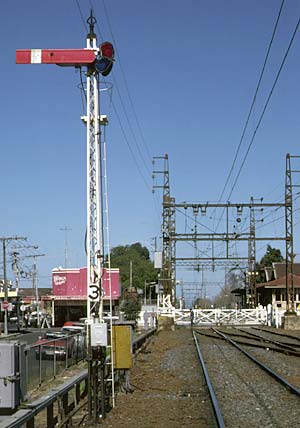 |
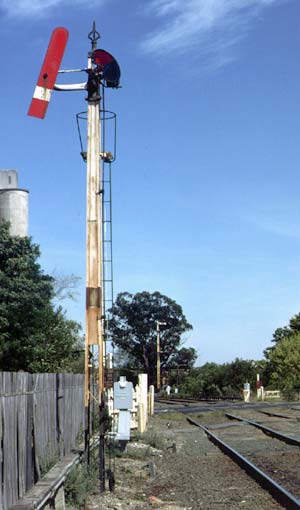 |
|||||||||||||||||||
| Glenhuntly, down home arrival, 1984 | White's siding, down home signal. 1981 | |||||||||||||||||||
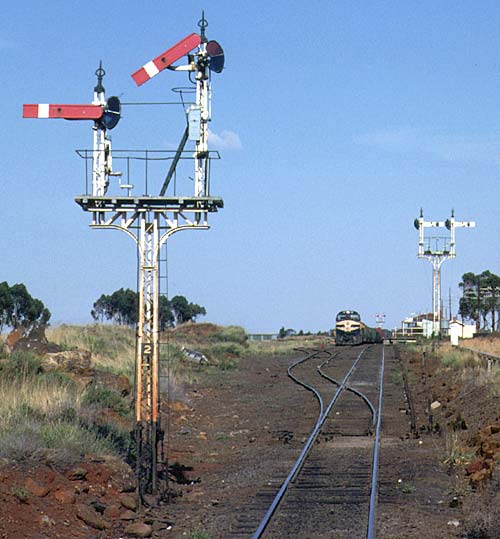 |
Here are two home signals on the same post. The smaller posts that the actual arms are attached to are called "dolls" The left hand signal applies to the left hand track and the right hand signal applies to the right hand track. If the diverging track was to the right of the mainline the doll heights would be reversed. The reason that the dolls were of different heights was to indicate which move was the diverging move. This information was crucial because the diverging speed was normally a lot lower than the mainline speed.
An important convention with 2 position signals is that for movents on running lines each track has a separate "doll" A signal with 2 or more dolls is called a "bracket signal" The signals and points are "interlocked" in such a way that the points have to be locked in the correct position before the appropriate home signal can be placed to the proceed position. The first home signal at a station is called the "home arrival" and normally the signal for the straight track is higher than the signal for the diverging track as shown here. |
|||||||||||||||||||
| Parwan, up home arrivals, 1981 | ||||||||||||||||||||
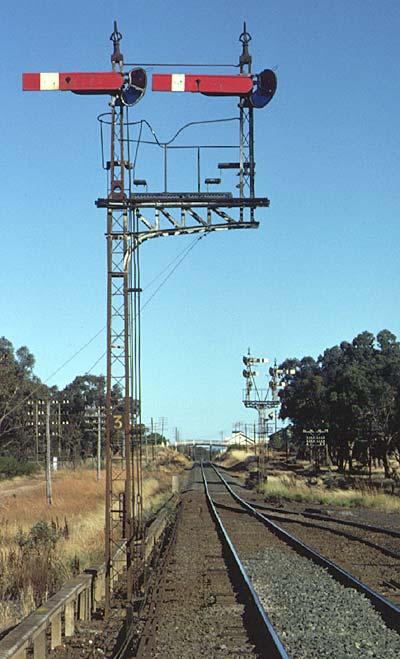 |
||||||||||||||||||||
| At the departure end of a "crossing loop" the 2 home signals performed the same function as the "home arrival" (protecting points) but now they apply out of different tracks.
Left hand home signal being the departure signal out of the left hand track (mainline), right hand home signal being the departure signal out of the right hand (loop) track. "Home departure" signals are almost always the same height because they lead to the same track, so there is no difference in speed unlike a home arrival. |
||||||||||||||||||||
| Great Western up home departures, 1980 | ||||||||||||||||||||
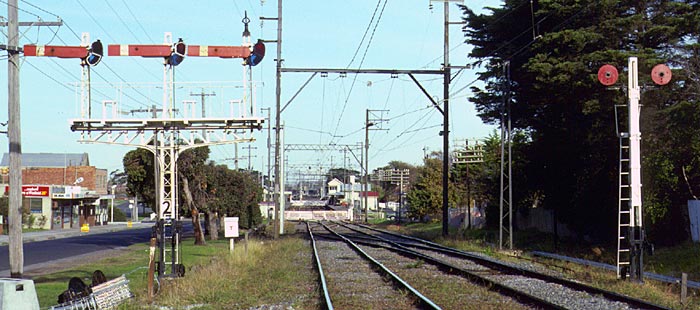 |
||||||||||||||||||||
To further clarify the principle of "One doll for each track" we can take a look at the "down home arrival" at Mordialloc. The signal diagram below shows us that the:
Because the speed for all three movements was the same the height of the dolls was the same. It should be explained that on signal diagrams, thick lines indicate running lines and thin lines are used for sidings. Generally speaking a home signal will be used for movements on running lines and discs will be used to and from sidings. |
||||||||||||||||||||
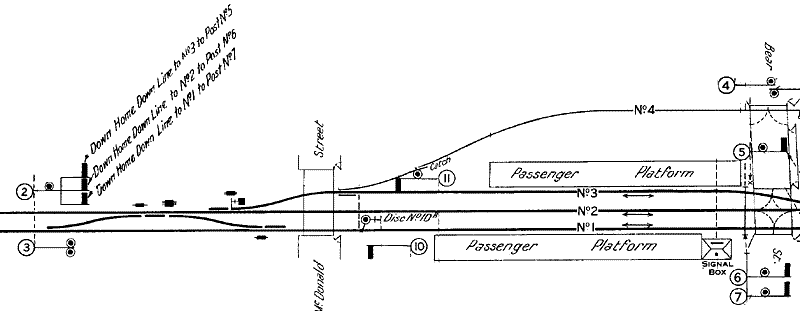 |
||||||||||||||||||||